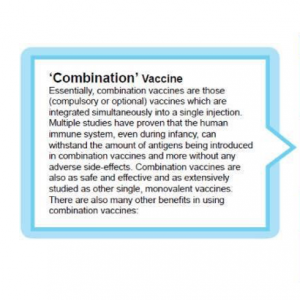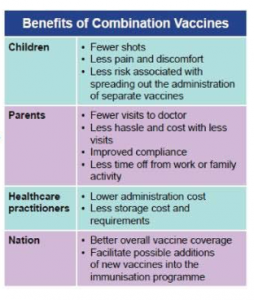What’s the difference between simultaneous and combination vaccines?
Combination vaccines contain more than one vaccine in a single shot. Studies have shown that all of the vaccines in each combination shot are compatible with each other and stimulate the immune system appropriately to provide protection. Combination vaccines have been used in the United States since the mid-1940’s, with a constantly maintained safety profile. Simultaneous vaccines are two or more vaccines given at the same time. Combination vaccines and simultaneous vaccines offer the same amount of protection. It does not matter which way you or your children choose to receive the recommended vaccines, however combination vaccines do offer several benefits:
- With only one shot given, it may be less traumatic
- Combination vaccines are a great way to vaccinate children as quickly as possible so that they have protection early in life when they are most vulnerable.
- Fewer visits to the doctor’s office to get multiple single vaccines saves time and money
Both the Advisory Committee on Immunization Practices and the American Academy of Pediatrics recommend combination vaccines whenever they are available.
Can a baby’s immune system handle more than one vaccine at a time?



